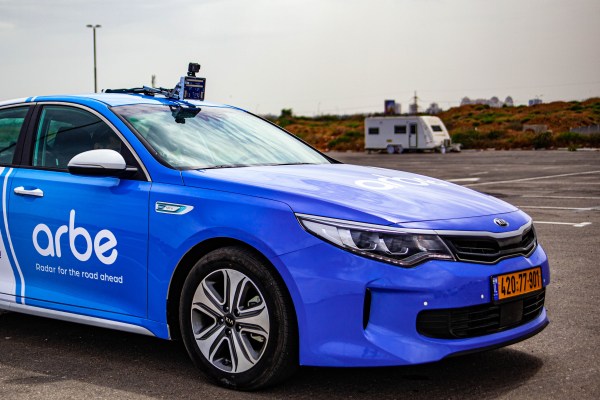Business
Arbe raises $32 million to bring its high-resolution radar to autonomous vehicles


It’s not enough for an autonomous vehicle to see the world around it. These vehicles need to understand in real time what they’re seeing.
That understanding piece is critical, and it requires being able to identify objects in real time and in any environmental condition. It can mean the difference between an autonomous vehicle that appropriately notices and ignores a plastic bag floating by and one that slams on its brakes.
Tel Aviv-based startup Arbe has developed a high-resolution radar chipset that it says is a game changer for the automotive industry. Now, with a fresh injection of $32 million in capital, it’s pushing to bring it into production and into the hands of Tier 1 suppliers.
Arbe said Monday that it has raised $32 million in a Series B funding round from a number of new investors, including BAIC Capital, Catalyst CEL, MissionBlue Capital and AI Alliance, a joint venture fund that includes Hyundai, SK Telecom and Hanwha Asset Management. Existing investors Canaan Partners Israel, iAngels, 360 Capital Partners, O.G. Tech Ventures and OurCrowd also participated.
Arbe will use the capital to hire more employees. But its big focus in the coming year is to bring its radar systems into full production.
“With the funds raised, Arbe will continue to deploy to the market a real breakthrough in radar technology that empowers Tier 1 automakers and OEMs to finally replace their legacy chipsets with one that truly meets the safety requirements of NCAP and ADAS for years ahead,” CEO Kobi Marenko said in a statement.
Arbe already has five Tier 1 customers — two in China and three in Europe, Marenko told TechCrunch. Marenko wouldn’t name the suppliers.
Arbe developed a high-resolution radar chipset designed to help autonomous vehicles, and even passenger vehicles equipped with advanced driver assistance systems, detect and identify objects. The technology can separate, identify and track hundreds of objects in high horizontal and vertical resolution to a long range in a wide field of view. Arbe says its radar chipset generates an image 100 times more detailed than any other solution on the market today. The system is then able to take those images and simultaneously localize and map the environment.
The high-resolution radar chipset resolves a number of issues found in legacy chipsets, Marenko said, including eliminating false alarms. Arbe’s chipsets also can in real time process massive amounts of information generated by 4D imaging, and mitigate mutual radar interference. A radar system that has high-resolution object separation in azimuth and elevation will theoretically lead to more accurate decision making.
Arbe is so confident in its radar chipset that Marenko says it will enable Level 3 automation in passenger vehicles without requiring lidar, or light detection and ranging radar. Level 3 is a designation by SAE that means conditional automation in which a driver must still be prepared to intervene.
-

 Entertainment6 days ago
Entertainment6 days agoCES 2025 highlights: 12 new gadgets you can buy already
-

 Entertainment7 days ago
Entertainment7 days agoNASA asked for cheaper ways to get Mars samples. It had one all along.
-

 Entertainment5 days ago
Entertainment5 days ago‘American Primeval’ review: Can Netflix’s grimy Western mini-series greatest ‘Yellowstone’?
-

 Entertainment5 days ago
Entertainment5 days agoTesla launched the new Model Y in China. Here’s what you need to know
-

 Entertainment6 days ago
Entertainment6 days agoWhat’s new to streaming this week? (Jan. 10, 2025)
-

 Entertainment4 days ago
Entertainment4 days agoSpace calendar 2025: Here are the moments you won’t want to miss
-

 Entertainment3 days ago
Entertainment3 days agoEight ways Mark Zuckerberg changed Meta ahead of Trump’s inauguration
-

 Entertainment4 days ago
Entertainment4 days agoCES 2025: Hands on with the airy Asus Zenbook A14


















